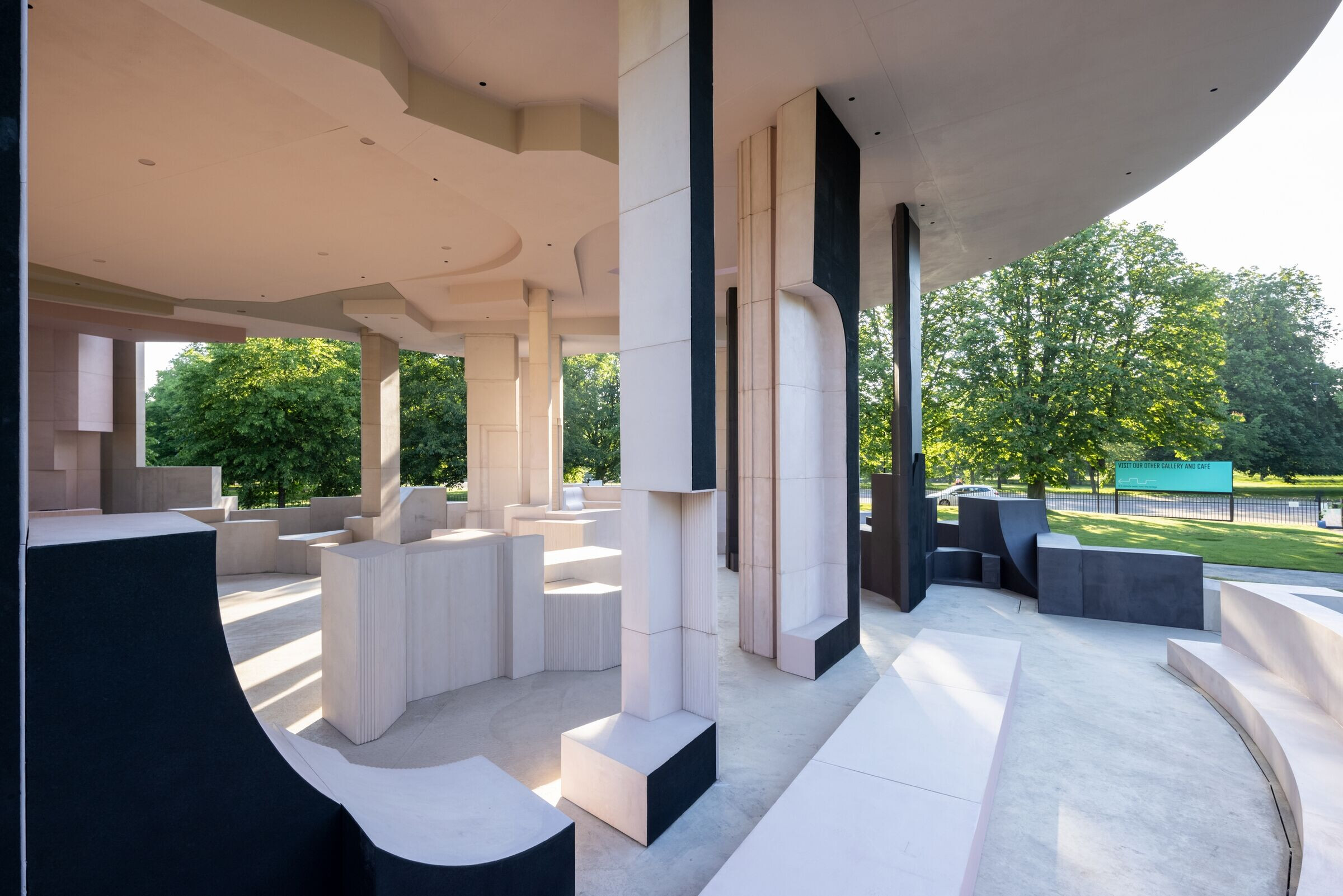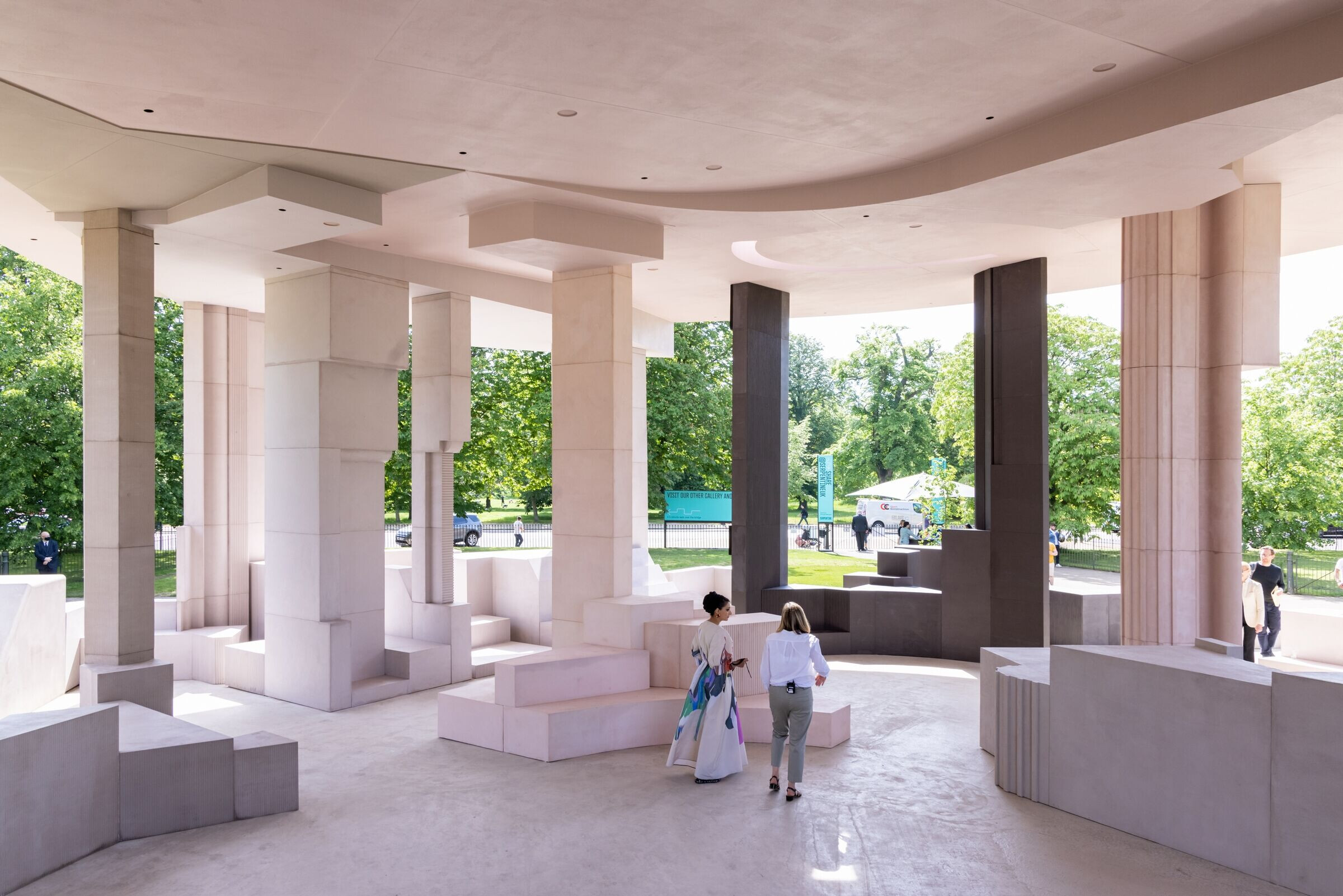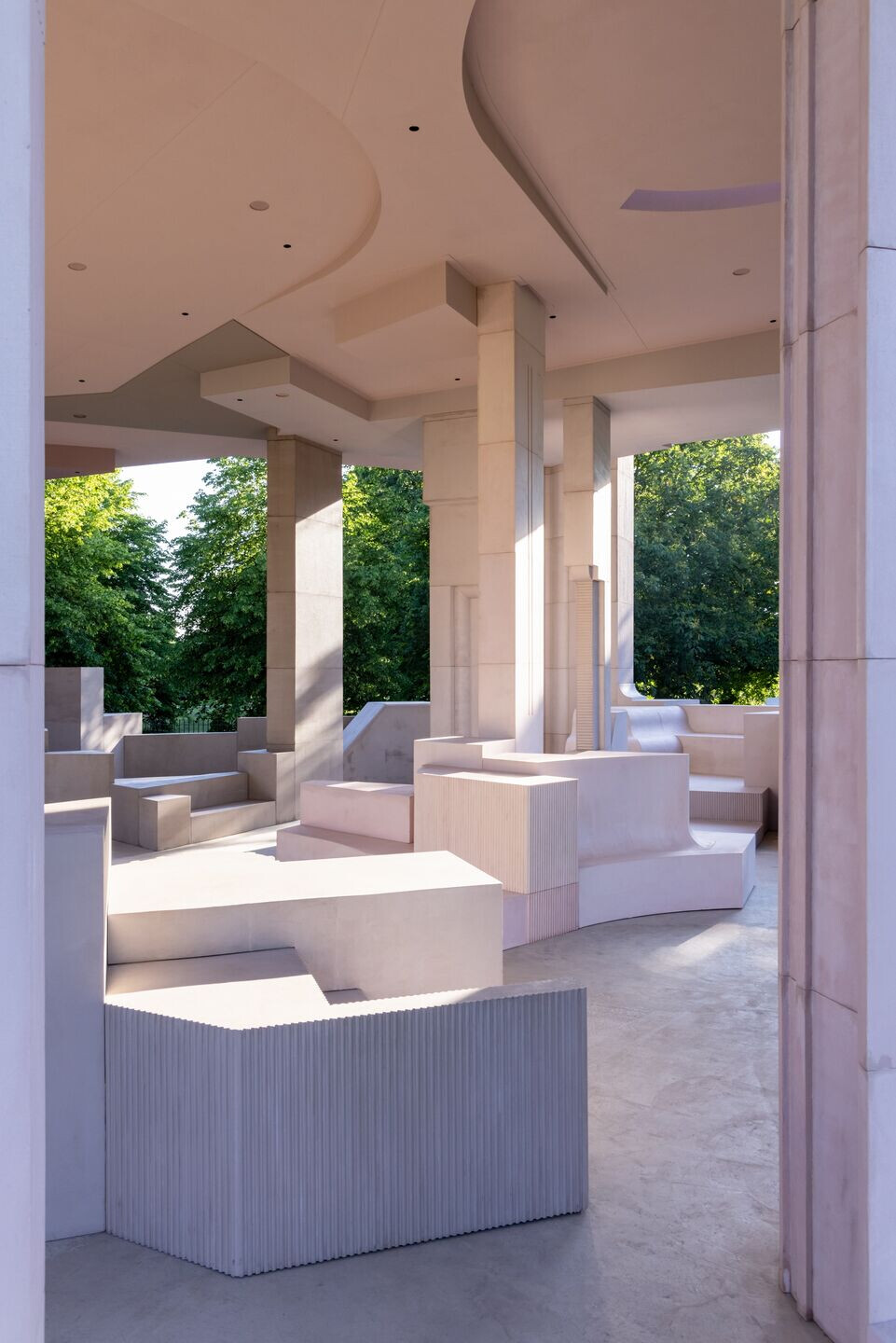The design of the Serpentine Pavilion 2021 is based on past and present places of meeting, organising and belonging in London. The shapes and forms in the Pavilion are a result of abstracting, adding, superimposing and splicing architectural elements, varying in scales of intimacy, from various locations.

Materially, these places are brought together in the Pavilion through imprints, formed and shaped in cork and micro-cement, finished with different textures. They reference the architecture of some of London’s gathering spaces – places of community and cultural production that are particularly relevant to migrant communities across the city, including places of worship, markets, restaurants, bookshops and local cultural institutions. Pieces of these places physically meet in the Pavilion to form new gathering spaces.

Listening to and amplifying ways of recording personal and collective experiences – those in the everyday and those in the embodied knowledge and rituals of communities – the Pavilion foregrounds stories of lost spaces that have been significant to the construction and continuity of identities for neighbourhoods in London including Brixton, Hoxton, Hackney, Tower Hamlets, Edgware Road, Barking and Dagenham, Peckham and Notting Hill. This drawing on erased and existing communal spaces recognises architecture’s role in preserving and evolving the culture of a place and the connections people have to it.

By engaging with stories of migration – the dis-placement and re-placement of people – the design symbolically folds London onto the Serpentine lawn to bring together a multitude of histories, referencing diasporas and geographies within and beyond the city. Conversely, during the Summer, fragments of the Pavilion extend into sites across London that bring other voices into conversation. This dissolving of the structure into the city physically and programmatically amplifies multiple centres that have held communities over time.

Through a specially commissioned sound programme Listening to the City, the Pavilion engages with a set of sonic geographies of selected neighbourhoods. The design process has also extended into thinking through more equitable, sustainable and imaginative institutional structures by creating Support Structures for Support Structures, a grant and fellowship programme that supports artists who work in, support and hold communities in London through their work.


























